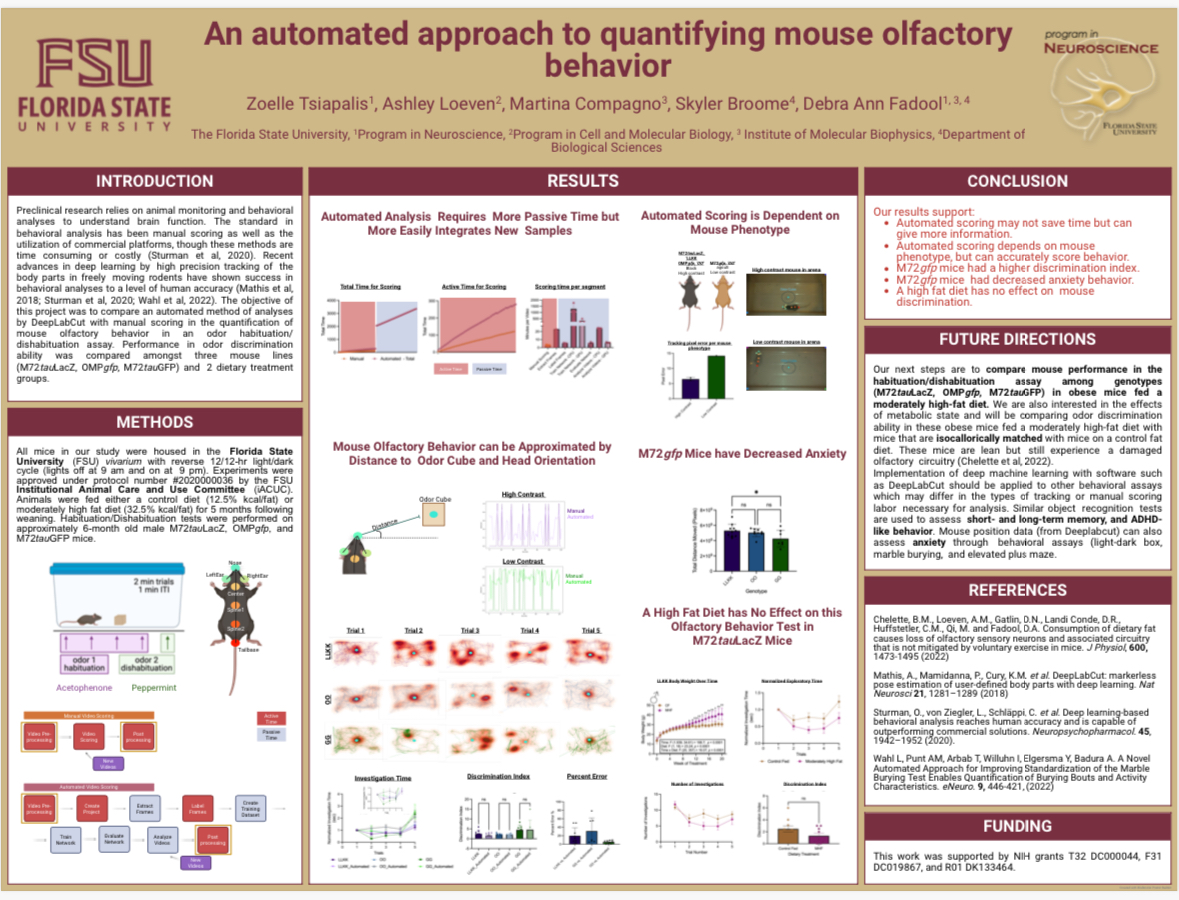Research Symposium
25th annual Undergraduate Research Symposium, April 1, 2025
Zoelle Tsiapalis Poster Session 4: 3:00 pm - 4:00 pm / Poster #279

BIO
I’m a fourth year cell and molecular neuroscience major, and an international student from the town of Milton Ontario, Canada. I transferred to Florida State University for my second year of undergrad in fall 2022 from the University of Ottawa. I have been a part of two research labs here at FSU- the Hughes genetics lab and I am now completing work in the Fadool neuroscience lab with a focus on diet-induced neuroinflammation in the olfactory system using a mouse model as well as automated mouse behavior quantification in behavioural assays. Outside of studying or working on research in the Fadool Lab I can be found working for FSU Campus Recreation or playing beach volleyball with the FSU Club Team. My post graduate aspirations are to attend Chiropractic College with a focus on neurology.
An automated approach to quantifying mouse olfactory behavior
Authors: Zoelle Tsiapalis, Martina CompagnoStudent Major: Cell and Molecular Neuroscience
Mentor: Martina Compagno
Mentor's Department: Institute of Molecular Biophysics Mentor's College: College of Arts and Sciences Co-Presenters: Skyler Broome
Abstract
Preclinical research relies on animal monitoring and behavioral analyses to understand brain function. Recent advances in deep learning over the last couple years enable tracking of individual body parts of freely moving rodents with high precision. Herein, we employed DeepLabCut to quantify mouse olfactory behavior in an automated fashion and compared it to manual scoring. We compared performance in the odor habituation/dishabituation assay to distinguish discrimination ability amongst three mouse lines (M72tauLacZ, OMPgfp, M72tauGFP). We found that automated scoring had an initial steep learning slope for the investigator that flattens after training, while the time demand for manual scoring increased linearly with each video scored. In automated scoring, our examined low contrast mouse line (M72tauGFP; agouti coat color) had a greater pixel error compared to that of the higher contrast mice (M72tauLacZ, OMPgfp, both black). The duration of odor investigation was approximated as the time the mouse spent in a region of interest surrounding an odor cube, and could be corrected by using mouse head angle. When comparing genotypes, M72tauGFP mice had fewer investigations, greater investigation time interval, and increased discrimination index compared to that of the other tested lines. For these experiments, we are also testing the effect of metabolic state and will be comparing results from obese mice fed a moderately high-fat diet vs. mice that are isocalorically matched with mice on a control fat diet. In summary, our results support that automated scoring is an effective and efficient scoring method for the odor habituation/dishabituation assay.
Keywords: olfaction, automation, brain function, metabolic state, deep learning


